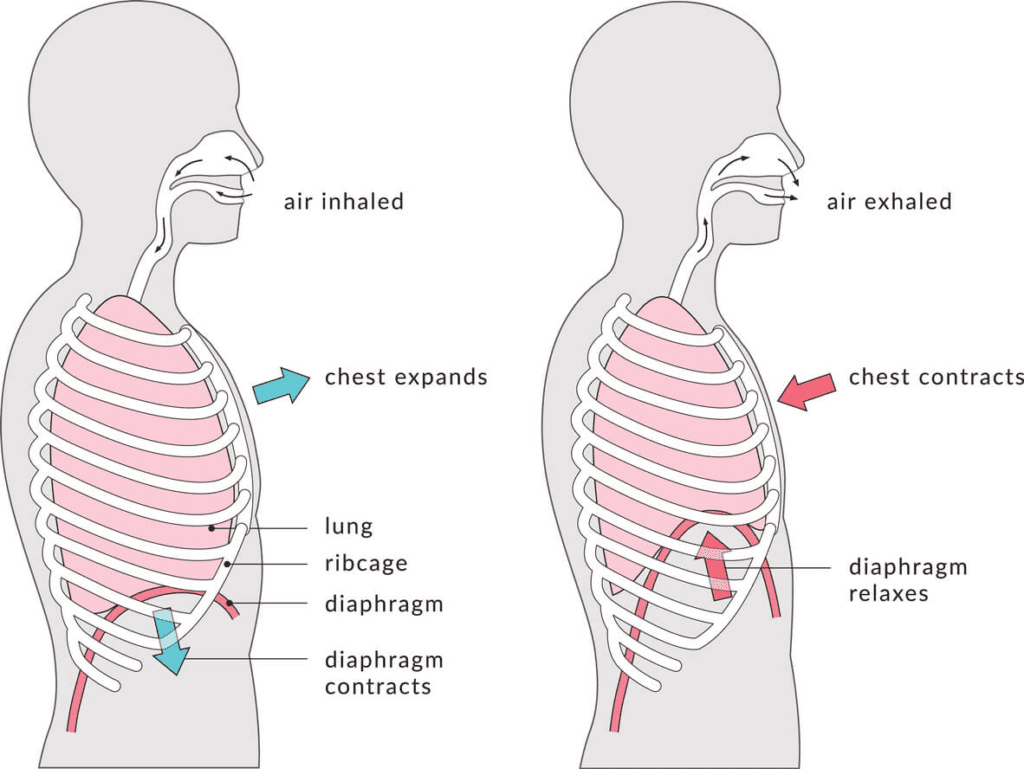The diaphragm, a large dome-shaped muscle at the base of the lungs, plays an important role in breathing — though you may not be aware of it. When you inhale, your diaphragm contracts and moves downward. This creates more space in your chest cavity, forcing the lungs to expand. When you exhale, the opposite happens — your diaphragm relaxes and moves upward in the chest cavity pushing air out.
Normal breathing is relatively shallow and does not use the lungs’ full capacity. During diaphragmatic breathing, you consciously use your diaphragm to take deeper breaths.

Benefits of Diaphragmatic Breathing
Diaphragmatic breathing helps you use your diaphragm correctly while breathing by:
- Strengthening the diaphragm
- Improving control of your core
- Slowing the breathing rate
- Lowering heart rate and blood pressure
- Promoting relaxation
What conditions does it help with?
Diaphragmatic breathing may help several conditions that cause symptoms that affect how you breathe, including:
- Anxiety/ Stress
- Asthma
- Chronic Obstructive Pulmonary Disease (COPD): In COPD, the airways within the lungs become damaged and inflamed, obstructing airflow in and out of the lungs. The diaphragm also tends to be weaker. The body often tries to compensate for this weakness by engaging the back, neck, and shoulder muscles while breathing.
- Stress: Reduces stress hormones in the body, mainly cortisol.
Diaphragmatic breathing can help treat certain conditions, but it shouldn’t be the only treatment. It may be a beneficial add-on treatment for people with anxiety or respiratory conditions such as COPD or asthma. However, it is not an effective standalone treatment for these conditions.
How do I practice diaphragmatic breathing?

- To begin with, practice diaphragmatic breathing in a relaxing area, such as a quiet room. Avoid distractions like cell phones, televisions, and others. Instead, focus on the breathing technique and the bodily sensations you feel while practising.
- Lie on a flat surface (or in bed) with your knees bent. You can use a pillow under your head and your knees for support if that’s more comfortable.
- Relax your shoulders, shifting them down away from the ears.
- Place one hand on your upper chest and the other on your belly, below your rib cage. This will allow you to feel your diaphragm move as you breathe.
- Breathe slowly through your nose for 4 seconds, breathing deeply towards your lower belly. The hand on your chest should remain still, while the one on your belly should rise.
- Tighten your abdominal muscles and let them fall inward as you exhale through pursed lips for 4 seconds. The hand on your belly should move down to its original position
- Repeat these steps several times for the best results. Practice for five minutes several times a day if possible.
References:https://www.ncbi.nlm.nih.gov/pmc/articles/PMC5455070/
